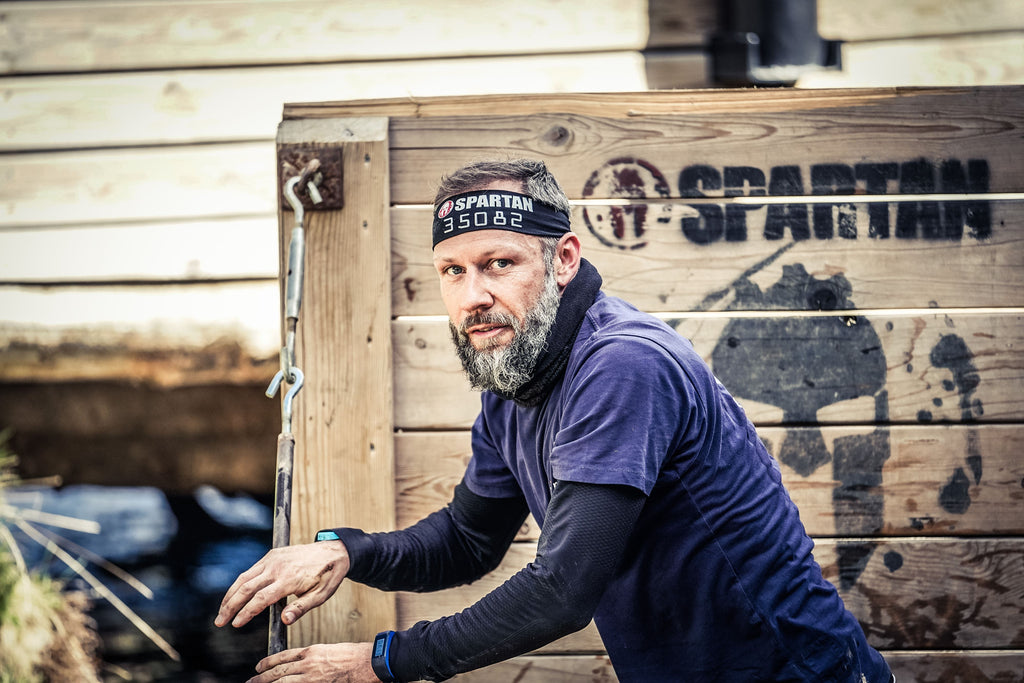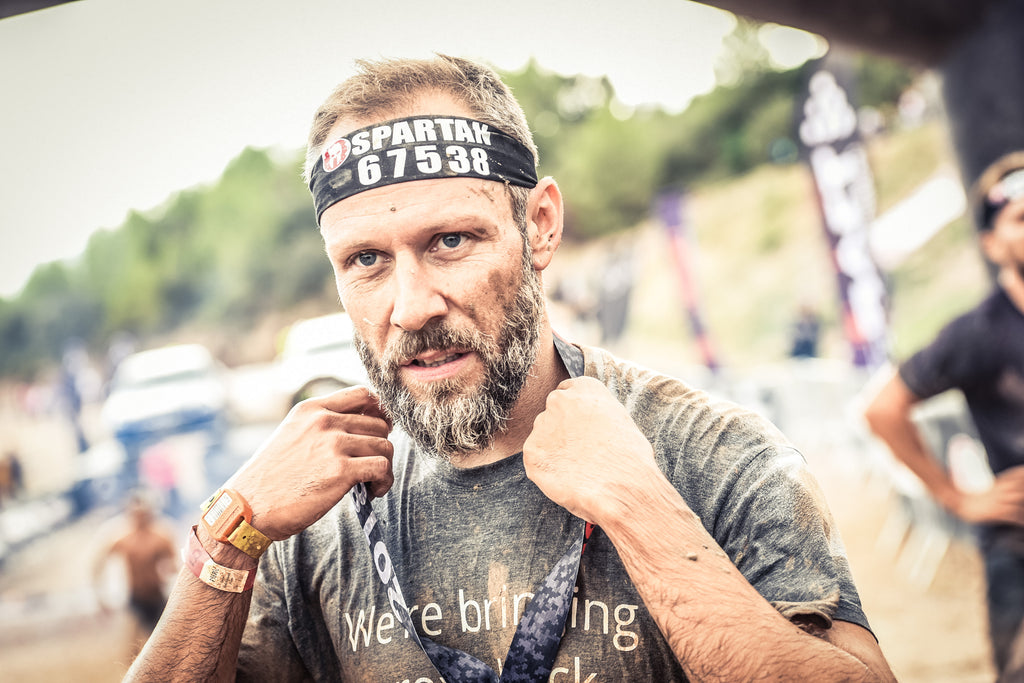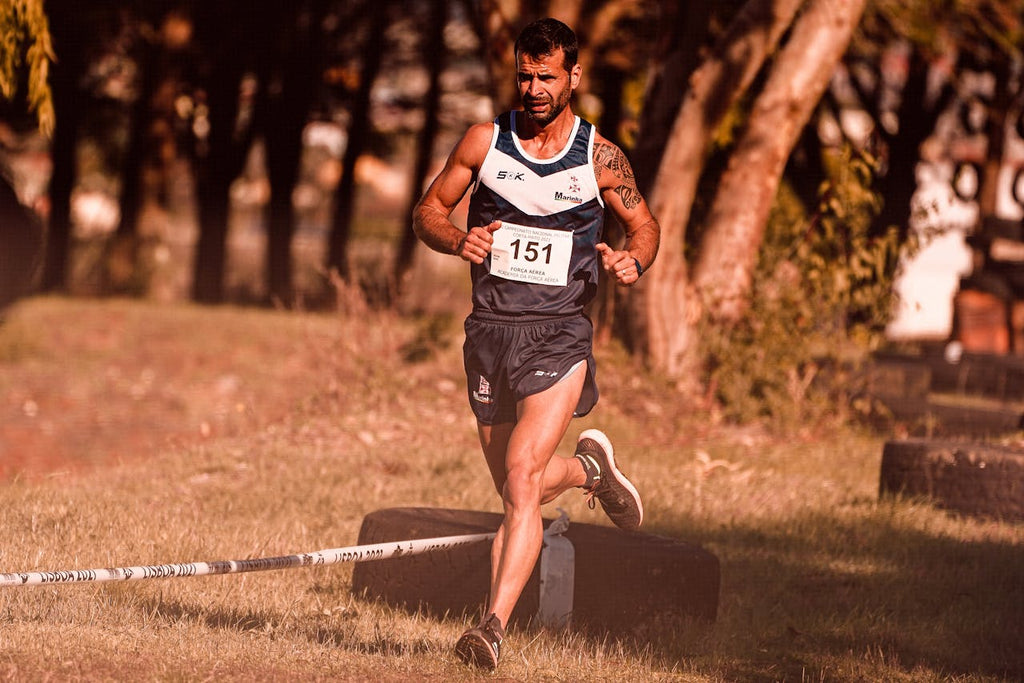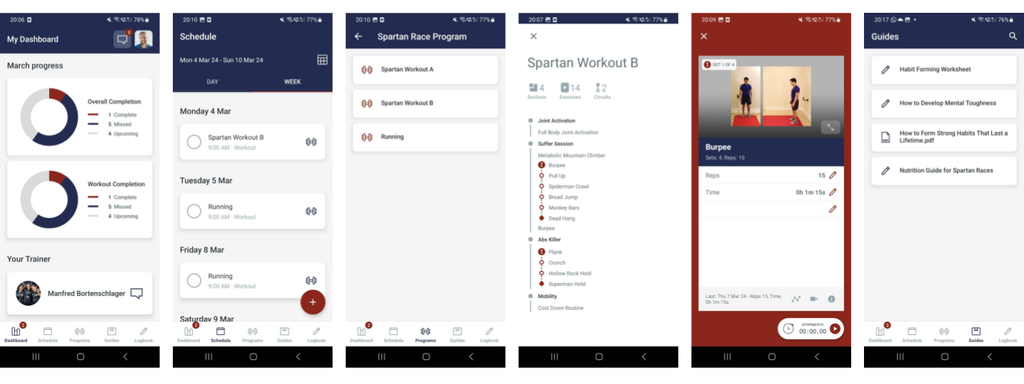
Spartan races and obstacle course races (OCRs) are tough types of races that test various different aspects of fitness. This makes the right race preparation particularly important and challenging.
In this article, I will go over the best ways of approaching a Spartan race, key preparation components, and the optimal Spartan race training plan. I will also cover Spartan race nutrition advice, race day tips, injury prevention, and the power of community. I will also introduce the Spartan Race Preparation Program app which is an easy-to-follow guide about how to train for a Spartan race.
What Is a Spartan Race?
Spartan races are a series of obstacle course races (OCRs). Other series include Tough Mudder, Warrior Dash, Rugged Maniac, Tough Guy, or the Legion Race.
The history of obstacle course races traces back to military training courses. These early obstacle courses featured a variety of physical challenges, such as climbing walls, crawling under barbed wire, and diving through mud pits. Over time, OCRs evolved from military training exercises into recreational and competitive events.
In the late 20th century OCRs gained widespread popularity as mainstream sporting events. The modern OCR movement was born by organizations like Tough Guy in the UK in 1987 and races like Tough Mudder and Spartan race in the early 2010s. Since then, OCRs have exploded in popularity, attracting millions of participants worldwide.
Today, OCRs continue to attract participants with their combination of physical challenges, camaraderie, and a sense of adventure.
Spartan races are one of the bigger series of OCR race events. They offer a variety of race distances tailored to different fitness levels. The Sprint, the shortest distance, typically spans 5 to 7 kilometers and features 20-23 obstacles. The Super covers 10 to 12 km with 24-29 obstacles. The Beast presents the ultimate test with a 15 to 22 km course and 30-35 obstacles. A more recent addition is the Ultra which is a marathon-distance course with over 60 obstacles.
Why Is a Spartan Race Challenging?
Participants in Spartan races can expect to encounter diverse obstacles designed to push them to their limits. From rope climbs and javelin throws to wall traverses and mud pits, each obstacle demands a blend of strength, agility, speed, and strategic thinking. The terrain requires navigating steep hills, dense forests, and water crossings -- ofter covered in sand in hot weather, or cold and wet with snow.
But it is exactly this relentless combination that makes up the Spartan race experience. It is a transformation that you go through and you will create unforgettable moments.
A Spartan race is challenging because it does test all important modalities of fitness: endurance, strength, mobility, agility, power, coordination, and balance. But it goes beyond that and also tests you as a person with respect to (mental) toughness, discipline, pushing through, and camaraderie.

Approaching a Spartan Race: Goals
Like with any other competition or project, the first step is to be clear about why you want to participate in a Spartan race and what you want to get out of it. This is the basis for your goal setting and subsequent development of your preparation and training plan.
Two typical motivations for participating in a Spartan race are either for a good result (performance-driven) or simply to have a good time with friends (entertainment-driven). Both obviously translate into completely different goals and will require different preparation approaches. The latter is totally justified and I did it several times as well. It is indeed a lot of fun and will weld together a group of friends even closer. The finishing time is less of a priority.
If you approach a race performance-driven and you want to optimize your finishing time, then I strongly recommend creating a training plan that covers all key aspects for optimal preparation.
Aspects to Consider in Your Race Preparation
A Spartan race tests a lot of very different aspects, which is part of the reason why it's so attractive and exciting. If you want to prepare and perform well, you will have to address these aspects in your race preparation.
The key aspects are endurance (mainly related to running), strength (especially upper body, core, and grip strength), mobility and flexibility, mental toughness, nutrition, and recovery. Additionally, without the right mindset, attitude, and discipline you will fail in the race or at least not enjoy it.
The typical training principles also apply to the Spartan race preparation. I already covered the principle of knowing your goal and building out a training plan. Related to this is monitoring your progress, which can easily be done with a spreadsheet, an app, or simply paper and pen.
Also, make sure that your training plan progressively overloads you. As you train, your body adapts. Make your routine harder over time so that you stay challenged and continuously improve.
Training hard and intensely is certainly one ingredient for a great performance. Equally important is consistency. Don't work hard one week and do nothing the next. It's better to chip away every day a little bit and plan for recovery as well. A good training plan must consider appropriate rest periods.
Awareness of the Principles of Generality and Specificity is very useful for Spartan race preparation as well. General aspects to train for include endurance and strength. Specific aspects include knowing the ideal technique to master race-specific obstacles like rope climb, javelin throw, or Atlas stone carry. In a later section, I will cover this in more detail.
A further recommendation is to build phases into your training plan. Ideally, you can take at least three months as preparation time, which depends on your goal and your fitness level. This plan will have various phases including building the base, progressing strength and endurance to the desired level, tapering before the race, the race itself, and post-race recovery.
In the next section, I will cover details about the key components every Spartan race training plan must include.
Important Components Of a Spartan Race Training Plan
A Spartan race tests many different abilities. Here is an overview of how to prepare for each of these.
Endurance Training
A Spartan race requires a lot of running for several hours depending on the distance. Hence, improving your endurance to the right level is essential. A range of cardiovascular activities such as hiking, cycling, fast walking, or swimming will help you achieve that. This type of cardio is also referred to as low-intensity steady-state cardio (LISS as opposed to HIIT).
The best way to prepare for the running aspect is to go running. Depending on the phase of your training plan this can be around 2-4 times running per week mixing short and long runs with different intensities. These should also include hill sprints for power and explosiveness.
Don't forget to practice burpees!
Apart from the fact that they are a great exercise for raising heart rate, and improving endurance, flexibility, and power, it is also required for the Spartan race. If you miss an obstacle you'll have to do 30 burpees.

Strength Training
Overcoming the obstacles will require a good level of strength -- in particular in core and upper body areas. This requires developing functional strength, muscular endurance, and power. This can be achieved with tools like barbells, calisthenics, or machines focusing on compound movements, or bodyweight exercises.
Some of the best exercises for Spartan races include pullups, pushups, bench dips, dead hangs, broad jumps, alternating jump lunges, bear crawls, planks, hollow holds, or Superman holds.
Mobility and Flexibility
Lots of movements during a Spartan race are quite unusual and awkward. The more mobility and flexibility you have the easier you'll find these moves. Mobility is the range of motion in your joints. Flexibility is the ability to lengthen your muscles, and tendons, eg, to open up extremities.
There are a ton of different exercises to improve flexibility and mobility. You should include these in your workout routines as a warm-up or cool-down phase, or have them as part of your morning routine.
Obstacle-Specific Training
Some of the obstacles you will face are quite technical and will require the right skill and technique to overcome them efficiently. I recommend to familiarize yourself with obstacles such as rope climbs, monkey bars, walls, carries, and crawls. On Youtube you can find plenty of videos explaining the best ways to tackle the obstacles.
For practicing, ideally, you can find an obstacle course, a calisthenics area, or a public park with some pullup bars. Developing good grip strength will be essential. Improving your balance will help a lot, too.
Don't forget: Failing an obstacle means 30 burpees. So, you better get the burpee technique right. It will save you a lot of energy.
Nutrition and Hydration
Nutrition is super important for your race preparation. A generally true recommendation is to cut out all the junk shit, i.e. processed foods, trans fats, and sugary drinks.
To come up with a good nutrition plan you first need to be clear about your goal and in accordance with that measure or calculate your daily caloric need. You will train a lot, so it's ok to set your planned calorie consumption slightly higher (5-10%).
Next, you'll define your macro split. I recommend to set that to about 40% carbs, 30% protein, and 30% fats. On days, when you have more intense cardio sessions I'd increase the carbs portion a bit. You'll need the extra energy.
Make sure you also stay sufficiently hydrated.
Race day fueling is a different topic and deserves a complete article in its own right. For now, I refer to this pre-race nutrition guide.
Mental Preparation
Changing behavioral preferences is not something that happens overnight. This requires awareness, intent, and consistent execution. However, for the Spartan race you don't need to change your personality. That would be an overkill, of course.
But it is tough and you will have to be comfortable with being uncomfortable. This is less a personality thing but more a mindset and attitude thing. It's about developing mental toughness. I like Jocko Willink's quote, "To be tougher, just be tougher!" Being tougher is like a muscle that becomes stronger the more you train it.
So, put yourself into uncomfortable situations. Get outside of your comfort zone and grow. Don't stop running when you are tired. Don't stop abs crunches when it burns. Go out in the morning for a brisk walk even though it's raining. Take cold showers.
Going through these little tough situations will make you a little tougher and more resilient every day. In addition, other useful mental preparation tools include visualization, positive self-talk, mindfulness, and focus on discipline. These will help you perform better during Spartan race day.
Race Day Tips
My top race day tip -- which I know from my own painful experience -- is to never try anything new in the race.
Stick with stuff you know works. Use shoes and clothes you have used before. Eat stuff before the race where you know you don't have any negative reactions. If you really wanna bring energy gels, use some that you had before.
The evening before the race make sure you fuel well with lots of carbohydrates. But don't overeat and don't drink alcohol. On the race day, eat something nutritious and not too heavy about 4 hours before the race. Have a small snack half an hour before the race (like a small banana). Stay hydrated. Drink about a quarter of a liter of water just before the race. Go to toilet before the race.
During the race make sure that you stop at most of the aid stations to stay hydrated and take a little snack. If the sun is strong wear sunglasses, a hat, and sunscreen. Spartan races are rough and dirty so use equipment where you don't care if you have to throw them away after.
When you are at the start line, remember: enjoy this thing!
You worked so hard, now is the time to stop overthinking and just run and enjoy. It is an experience that you'll never forget for the rest of your life.
Injury Prevention and Recovery
The best injury recovery is prevention in the first place. This means (a) don't do anything stupid, and (b) listen to your body. If your body is tired or parts are too strained, take a break or shift your focus.
Good recovery is key to keeping training and progressing according to your plan. Sleep is the king of recovery. Make sure you establish an effective routine that allows you to get the right quantity and quality of sleep.
Include active recovery mechanisms into your routine like stretching, yoga, massage, cold exposure, or dry needling. Lots of foods support recovery and have anti-inflammatory effects.
Community and Support
Training with like-minded people can be extremely effective. Not only can you learn a lot from each other, it is also a way to stay on track. In a group of people that works for the same goal, you will feel a sense of accountability. You will face times when motivation is a little lower or discipline is a little weaker. A community of supportive people will push you to do the right thing and move closer to your goal.
There are many ways to achieve that. If there is no OCR dedicated group around where you live for sure there are at least running groups or people who work out together. There are also virtual groups or online forums which you can join. You can also seek guidance from experienced coaches and mentors.
Finally, you can make use of dedicated Spartan race preparation programs that include community access. I will introduce one such program in the next section.
The Spartan Race Preparation Program App
I covered all important Spartan race preparation areas and training plan components above. You can use this knowledge and create your own routines based on it.
Or you could choose a ready-made Spartan race preparation program that combines all of this in one easy-to-consume training plan.
This is exactly what I would like to offer you: I created a program that will take out all the guessing for you. You will be able to prepare all the necessary aspects for a race in an ideal way. It will help you achieve your goal and have fun when race day happens.
The program includes strength, endurance, and mobility exercises, nutrition advice, mental toughening, and habit-forming tips. The training schedule offers a week-by-week breakdown of the Spartan race workout routine including videos. All of this can be conveniently consumed via an app or a Web platform.
It is a three-month program. It is not a subscription. But simply a one-off payment that will give you access to the whole training plan including videos, pdf guides, and worksheets.
Below are some screenshots to give some impressions about the app.
For more details, head over to my Spartan Race Preparation Program intro page.
The Optimal Spartan Race Preparation
Spartan races are physically and mentally challenging obstacle races. They are tough but totally worth it. In March I will run my seventh race and it will for sure not be my last. These are very rewarding and unforgettable moments.
In this article, I shared the different components of race preparation and the optimal spartan race training plan based on my experience. You can leverage all this knowledge to customize your own preparation journey, or you can opt for my program.
My Spartan Race Preparation Program app is an easy-to-follow guide about how to train for a Spartan race. It will help you to create these unforgettable moments and to cross the finish line healthy, happy, and as a better version of yourself.


